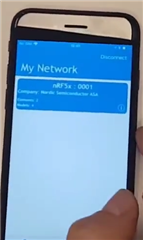I am running an example from Mesh SDK (v2.1.1) named "ble_app_uart_coesixt". I see device in Bluetooth list, everything is ok. But I need to provision this device using my smartphone without other devices. My goal is to provision device and than communicate with regular BLE uart profile. I can't understand how to combine "light_switch proxy_client" with coexist example. As I see it is just GATT service, and I don't need a "proxy" feature itself, only need to provision device with BLE. How can I do it?



